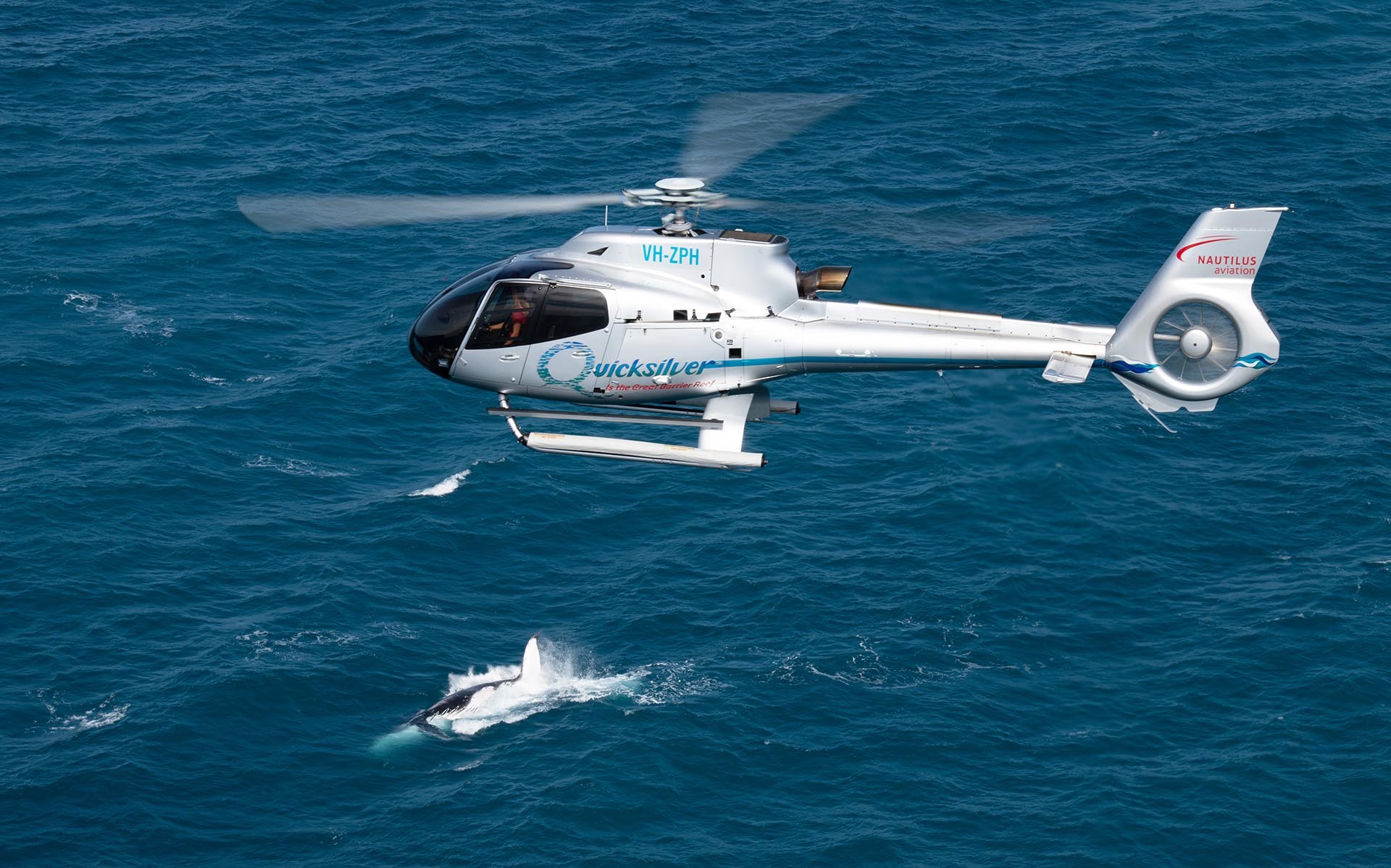Fresh into service after recent delivery are a pair of new Airbus H130-T2s, with which Nautilus Aviation services scenic flight contracts for two of the Quicksilver Group’s reef-tour operations on the Great Barrier Reef off Australia’s eastern coast.
New to The Great Barrier Reef
Clear, shallow waters teeming with marine life are a feature of the world’s largest coral reef system, which attracts thousands of visitors every day, keeping a multitude of tourism operators busy all year round and providing opportunities for a number of helicopter operators who offer scenic flights over the reef. Nautilus Aviation is one of the largest scenic flight operators and has established an efficient infrastructure to service contracts with a number of tour boat operators along the reef.
Adding to the company’s reef operations is a pair of new Airbus H130-T2s, which were delivered in June and July of 2019 and join an existing pair of –T2s and a B4 on the Nautilus fleet. In a departure from Nautilus’ trademark bright red however, each of the two new aircraft is painted in a unique color scheme to match the tour operator that they provide scenic flights for. One machine gleams in a metallic silver adorned with Quicksilver’s corporate artwork and will be based in Port Douglas, while the other aircraft bears Great Adventures’ logo on a metallic crystal pearl paintjob and will operate out of Cairns. Focusing on quality and attention to detail and instead of using decals, a local graphic artist hand-airbrushed all the logos before the clear coat was applied over the paintwork, which will provide much greater durability and minimize fading over time. Nautilus CEO Aaron Finn explained that the color scheme was an additional selling point when Nautilus was tendering for the contract, made feasible by virtue of the machines being brand new, while the Nautilus logo and name are painted on the tail fin and under the belly of the new machines to ensure that observers are in no doubt as to who’s aircraft they are. He confirmed that the non-standard color scheme was a one-off situation though, and that any further new aircraft would be liveried in the standard Nautilus bright red. “The color scheme was really just an up-sell and an additional point of difference for our tender.”
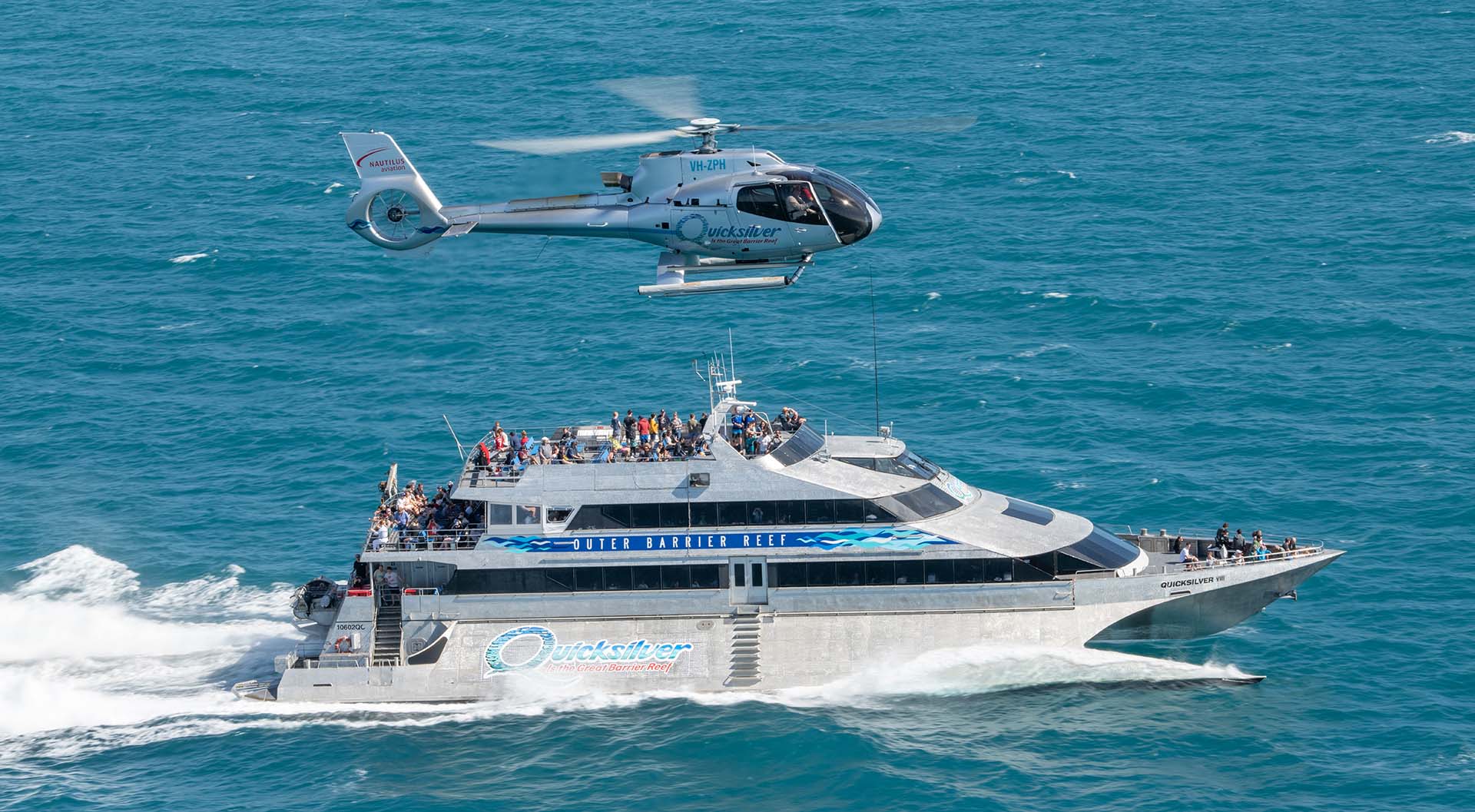
“The Quicksilver Group contract is an additional string to Nautilus’ bow, albeit a substantial one. The company already has contracts to
provide scenic flight services to other tour operators, including Sunlover Reef Cruises and Down Under Cruise and Dive, so the new aircraft
join the bright red Nautilus helicopters that are a familiar sight on the reef.” When not engaged on the reef work, the two new aircraft
are available as required for normal scenic flights, emergency services work or fire callouts. “It just depends on what’s happening out on
the reef,” stated Finn. “Sometimes there are cyclones or bad weather, and the boats don’t go out, so that frees up the helicopters.”
Daily Ops
Nautilus operates the new H130s daily from the company’s own pontoon helipads about thirty miles offshore on the outer reef, where they rendezvous with the big tour boats and take up to nine, ten-minute tourist flights each day, at AUD$189 - $199. The helicopter company also provides the small transfer boats to shuffle passengers between the heli-pontoon and the cruise-boat pontoon. Great Adventures runs their outer-reef cruises from Cairns to pontoons at the Norman and Moore reefs, while the Quicksilver boats takes tourists to a pair of pontoons on the Agincourt reef north-east of Port Douglas. Both services offer a fly-cruise or cruise-fly option for tourists who wish to pay about AUD$500 to take either the outward or return flight with Nautilus in addition to the ten-minute reef sightseeing tour, and Nautilus either provides or arranges transport for those passengers to or from their hotel. Most scenic flights are pre-booked through the cruise operator, but a pair of Nautilus personnel are on each pontoon, travelling out and back on the cruise-boat and selling additional flights to tour-boat passengers on the day if any seats are available. With the tour boats carrying around three hundred passengers each, there is a ready market for the flights over the spectacular reef, which lies right on the edge of the continental shelf and spreads over approximately 1,400 miles of Australia’s north-eastern coastline, covering about 133,000 square miles.
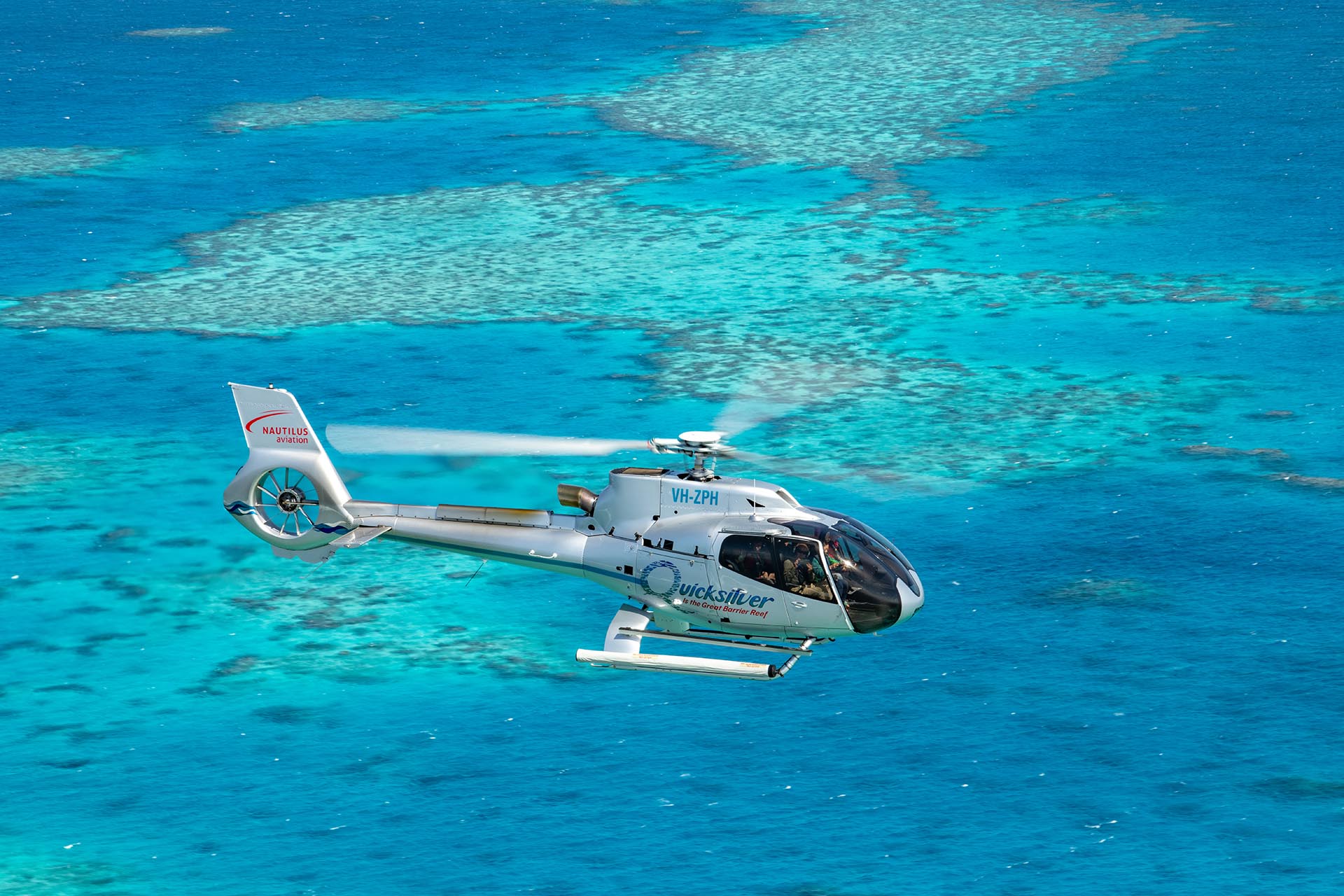
According to Finn, the boats usually leave port at about nine or nine-thirty and take around two hours to get to the pontoons, so the
helicopters depart at around eleven-thirty to reach the reef by about noon. “The boats all have slightly different schedules going out, but
they all leave the reef at the same time, so the afternoons are mayhem at the helipad because all the machines are getting back at the same
time,” Finn commented. The ten-minute scenic flights are conducted between five hundred and fifteen hundred feet, depending on conditions
and all follow a standard route over the reef, then circle out wide to return to the pontoon, which provides the two-fold benefit of
eliminating traffic issues and giving a consistent passenger experience. During a sightseeing flight over the reef, hump-backed whales,
minke whales, dugongs, sea turtles or manta rays might also be sighted dependent on the time of year and sea conditions. The helicopters
leave the reef at the same time as the boats, ceasing flying at around 2:40pm and Finn explained that the principal reason for selecting the
H130 was the type’s ability to operate as a seven-seater. “It just means we can get through more passengers and generate better revenues.
When you’re out at the reef you have a relatively captive market, but you only have a couple of hours out there, so obviously the more
people you can get through the better.”
Traffic Separation
For air traffic separation purposes, helicopters heading in and out of Cairns are restricted to not above 500 feet until around ten miles out, after which the usual transit altitude to the reef is between 1,000 and 1,500 feet. Because the reef operations are from a pontoon, sea conditions can create some challenge for the pilots.
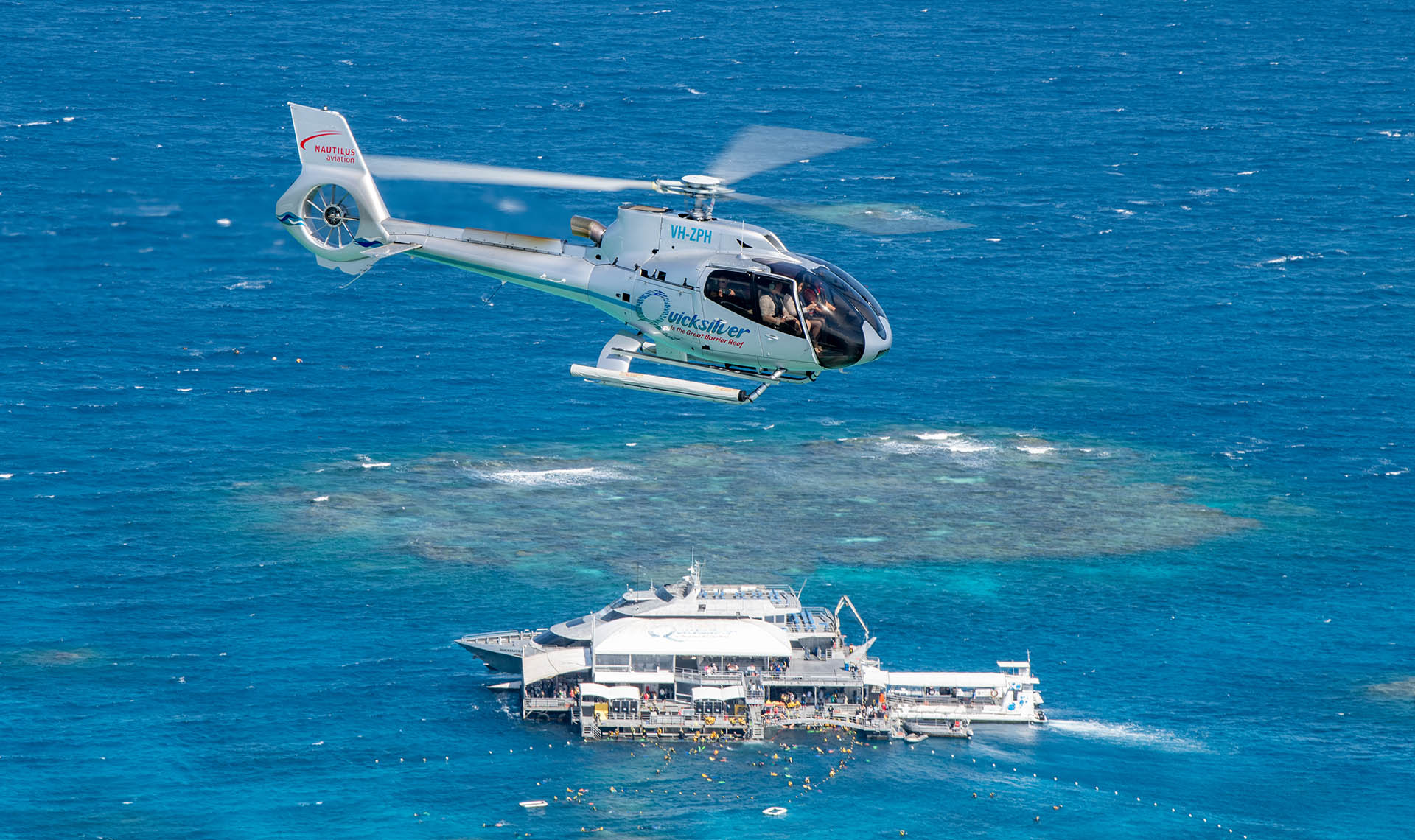
Swells sometimes cause the heli-pontoons to experience up to two meters of heave, although the pontoons are moored at a single point so at least they always swing into the wind, which is typically a sea breeze of ten to twenty knots. “They’re in slightly more exposed water out there and it can become a bit of a challenge landing. The best way is to descend as the pontoon’s coming up on the swell, let it come up towards your skids and then follow it down, but make you get onto it before it starts to come up again,” explained Finn. “Similarly, you don’t want to be trying to take off while it’s dropping away, so you let it come up and when you feel it’s almost at the top, you get light on the skids and let it fall away from the machine. There is a technique to it; it’s all timing and you soon get to know the rhythm. Remember that these guys are doing up to ten landings a day out there, so it doesn’t take long to get used to it.” Finn also stressed that if conditions were unfavorable, Nautilus never hesitated to cancel flights. “In the wet season you can get squalls with winds around forty knots and we don’t want to be out in that. We won’t push the boundaries because we don’t want to risk our crews or machines, let alone the passengers.” Crew and passengers all wear Switlik X-Back lifejackets on reef flights and Finn explained that the Switlik has replaced the Eam Bravo that Nautilus used to employ. “Because the Bravo has a big tag hanging out the bottom, people would go, ‘what does this tag do?’ and pull it. We don’t get anyone inadvertently inflating the Switliks but were getting a people every week who were inflating the Bravos. Then you have to get new cylinders and get them inspected, at almost two hundred dollars a time.”
Nautilus places a high value on relevant pilot experience and competence for the mission role. “With the exception of one junior pilot who we have here all the time, all our pilots flying out of Cairns have at least 1,000 hours,” said Finn. We rotate the guys through the different locations, so it never becomes same-old, same-old,” he reported. “From the safety aspect it just keeps people more on their toes, instead of going to the same place every day and possibly becoming complacent.” Port Douglas is a small satellite operation and has just one permanent pilot based there on the Quicksilver H130, although Finn advised that a second pilot and JetRanger is soon to be re-located to Port Douglas to carry out normal scenic flying, charter work and backup for the H130.
Quicksilver has two pontoons on Agincourt reef, so during peak season they run two boats out to the reef and at those times Nautilus operates a second helicopter to cater to the increased demand. “Quicksilver is the only company operating to pontoons out of Port Douglas,” Finn explained, “but out of Cairns it’s a bit different. There are a lot of smaller operators that take between sixty and a hundred and fifty people out for snorkeling and day trips, but they have moorings and work off their boats while the bigger operators work from pontoons and heli-pontoons.”
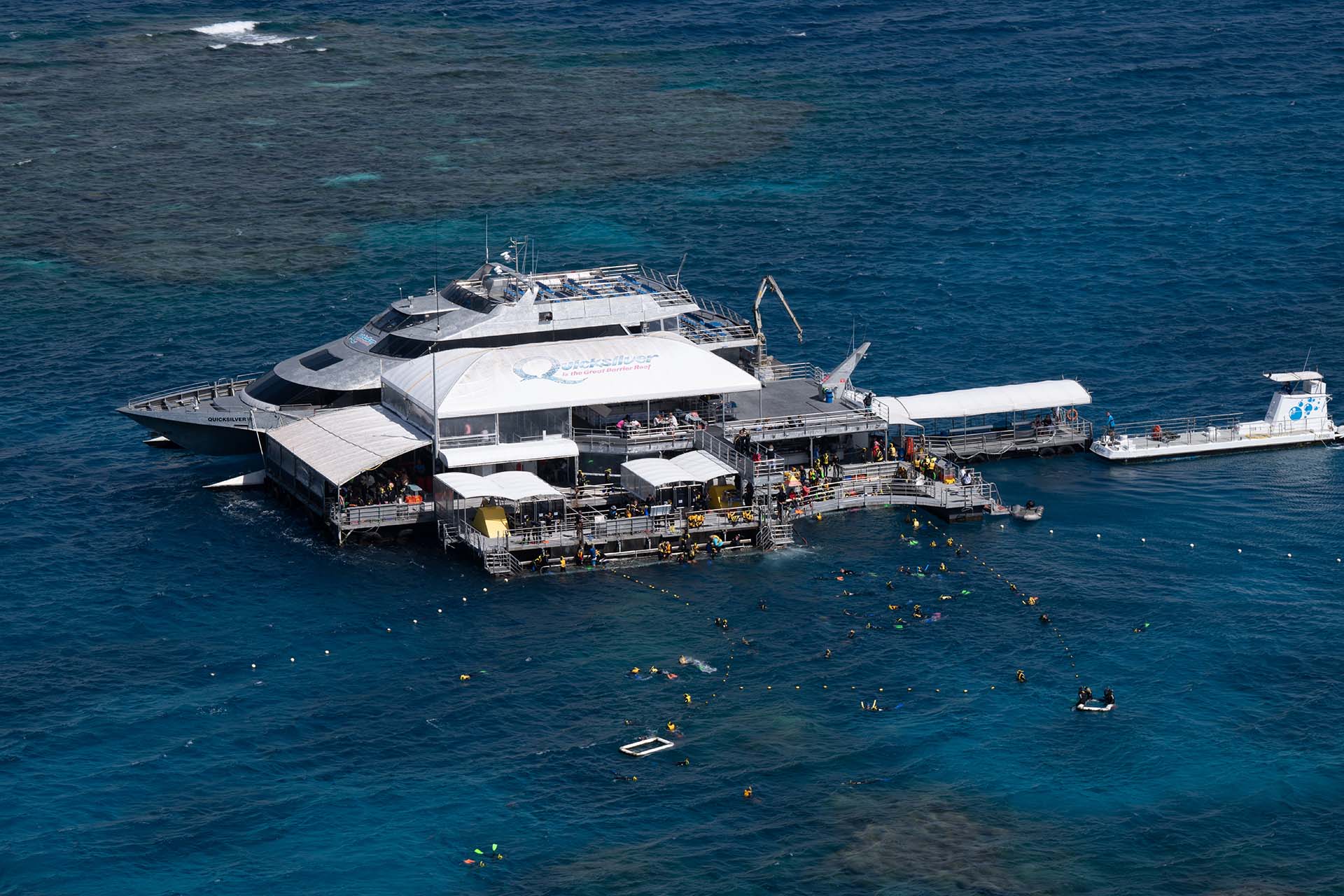
“Quicksilver has the largest passenger capacity but some of the others have two boats and can take four to six hundred people out in a day as well. All up we have seven heli-pontoons; two on Moore reef, one at Arlington, one at Hastings, one at Norman and two at Port Douglas.”
The heli-pontoons also carry a small amount of fuel, but each pontoon is restricted to a maximum of 200 liters under the marine park authority regulations. “That was another reason for the H130s,” remarked Finn. “They have that extra payload over types like the LongRanger and can carry that extra fuel, even with the extra seats, so we can do extended flights out there without re-fueling. With the T2s you can usually do the scenics at around 150 liters per hour, and in the cruise they’re about 190, so you can manage your fuel burn when you’re out there and still get your flights done.”
Demand
Although there are busy periods and quieter times throughout the year, Finn explained that even in the quiet periods demand is still steady as the area’s tropical warmth provides a winter getaway for Australians from more southern regions. “June through July is probably the busiest time and again from October through to February. There is a downturn in Northern Queensland tourism at the moment though,” he admitted. The numbers are down, and it’s been like that for about twelve months, plus the weather hasn’t been kind to us with cyclones and rain. I get the sense that we’ve hit the bottom though, and it’s going to pick back up again. There’s been a lot of marketing going on and it always takes about twelve months for that to bear fruit.” Finn observed that the passenger demographic at Port Douglas is predominantly western – largely European and American in the quieter, less bustling and more expensive locale, while the Cairns market shows a much higher proportion of Asian customers and Finn commented that thousands of Chinese visit Cairns over the Chinese New Year holiday period during January and February however this has obviously changed now with Covid 19 and all visitors are Australians from the various states.
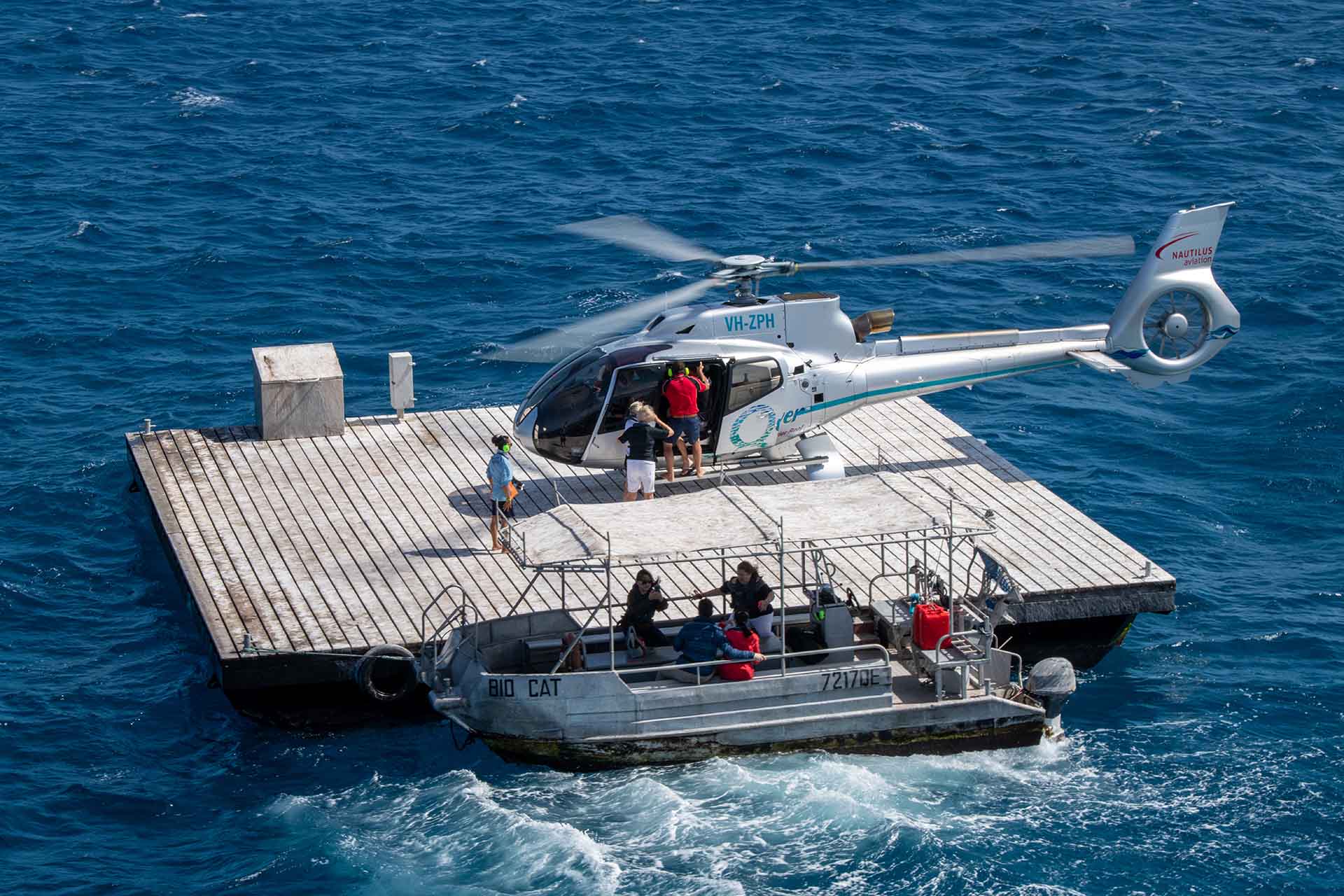
Fitting Out
Pacific Crown Helicopters (PCH) carried out assembly and completion on both new Nautilus machines and upgraded the interior finish to include leather lining - with Nautilus’ logo prominently displayed - on interior door panels, the roof and the rear bulkhead. “The interiors are magnificent,” enthused Finn. “They had some really good ideas at Pacific Crown and did a great job, delivered on time. Airbus provide a good machine but it’s a stock product, whereas Pacific Crown specialize in refurbishment, upgrades and custom work.” The floor is covered with durable rubber matting that is much more practical than carpet in an environment that sees dozens of passengers climbing in and out from marine pontoons every day, but the equipment level is pretty much standard and apart from Airbus’ seventh seat option, only pop-out floats and inlet barrier filters have been added to the factory equipment list, with a hook fitted to one machine.
“They’re pretty standard in terms of avionics. For the roles that they’re doing you can overcomplicate things by putting too many gadgets in; especially operating in an environment like this with high humidity, salt and heat,” explained Finn. An extra feature that is currently being trialed, however, is the first example of a new Pacific Crown modification, replacing the standard exhaust outlet with one from a AS365 Dauphin. This re-directs the exhaust gases away from the tail and virtually eliminates the soot deposits on the top surfaces of the H130’s tail that are a well-known and less than desirable characteristic of the type. With initial results being very encouraging, it is likely that PCH will find a ready market for this mod with operators who don’t wish to be regularly re-finishing paintwork but want their machines to look clean and well kept.
Marine Environment
Due to the harsh tropical marine environment, crews wash each machine inside and out every day with a quality aircraft detergent - or if time doesn’t allow they at least hose it down with fresh water - wipe down the leading edges of the blades with WD40 and carry out a daily compressor wash. At every 300hr inspection the seats and floor mats are removed to enable the underlying airframe to be washed. “There’s always a little bit of stuff that gets down under the mats along the firewall and around the pedals so it’s just good practice to take that extra couple of hours to tidy them up and avoid corrosion,” explained Finn. “And at every inspection we go around all the bolt heads and everything with corrosion inhibitor.”
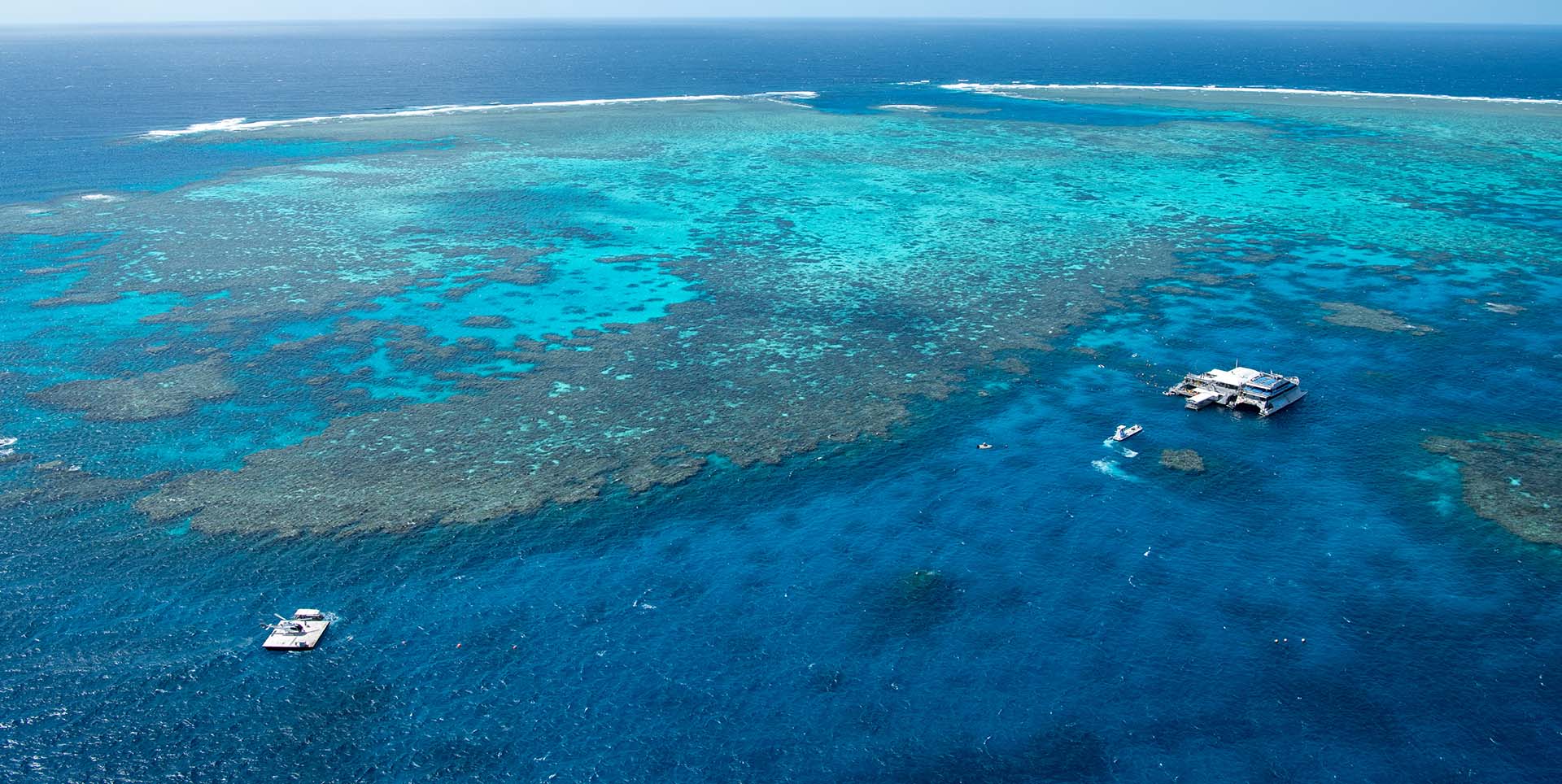
A usual day on reef operations comfortably clocks up around three hours flight time, making for nine hundred hours per year, per machine and Finn believes that buying the extra pair of H130-T2s was a smart move. “The seven seats is the big thing with them,” he stated. “I know they’re an expensive platform initially, but now with the TBO being extended to 5,000 hours on the D2 engine, the cost of operation comes right back. Their reliability is great, and the engines don’t miss a beat. They’re just a more advanced, modern aircraft with better safety features and I think that eventually more and more people are going to go this way because most helicopters out there are getting pretty long in the tooth. The worldwide fleet, particularly in general aviation, probably averages thirty or forty years old,” he concluded. The feedback from the customer has been very positive, with the quietness of the aircraft being a major point of comment. “They can’t believe how quiet it is over the reef,” said Finn, “and being able to get the extra passengers on board with those extra seats. Plus there’s the actual appearance of the brand new aircraft, which really gives that ‘wow’ factor and that alone almost makes people want to fly.”
 HOME
HOME


